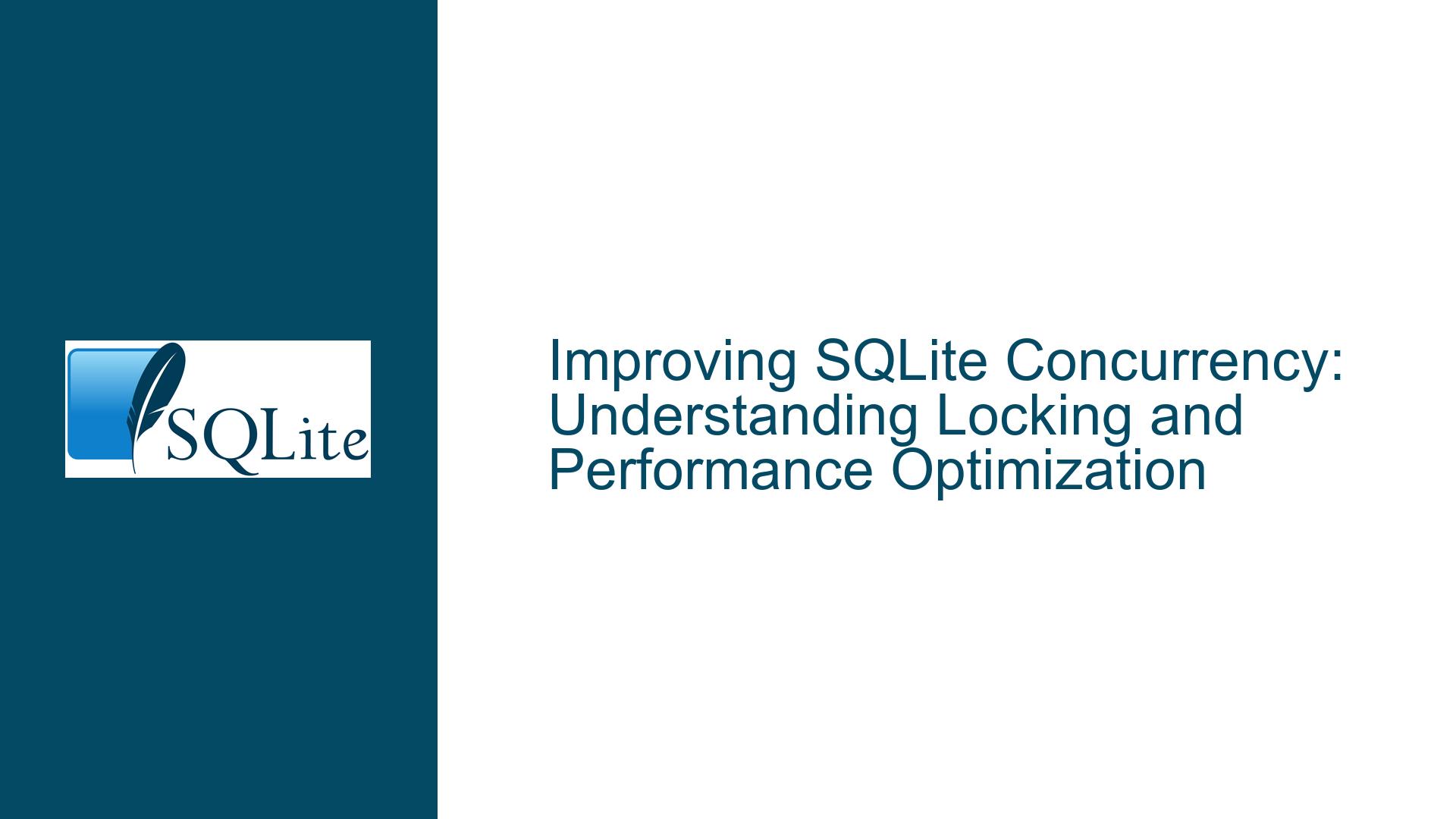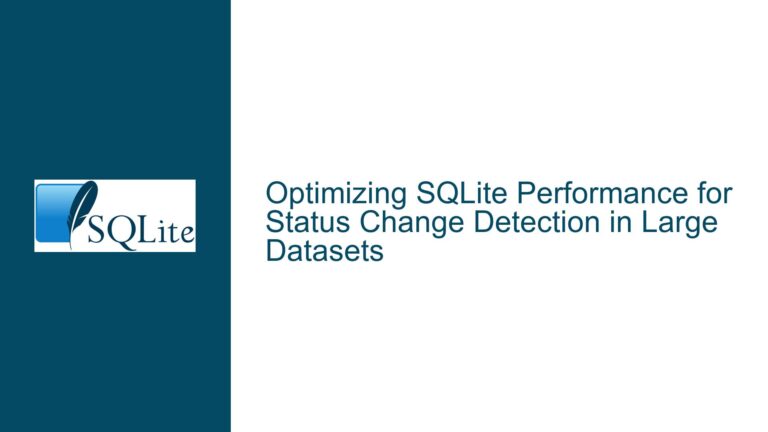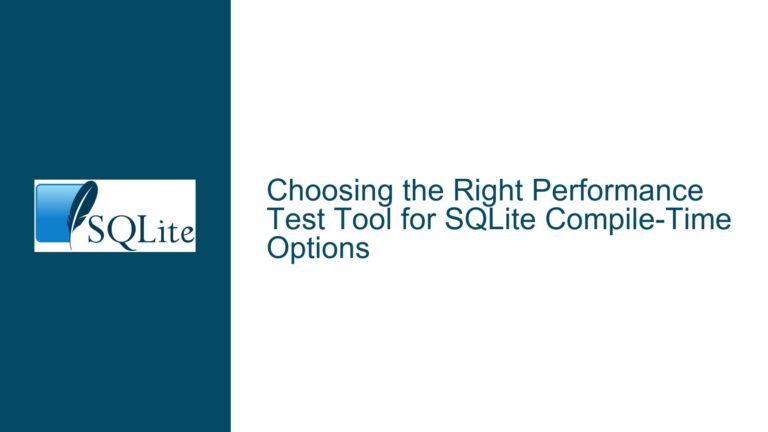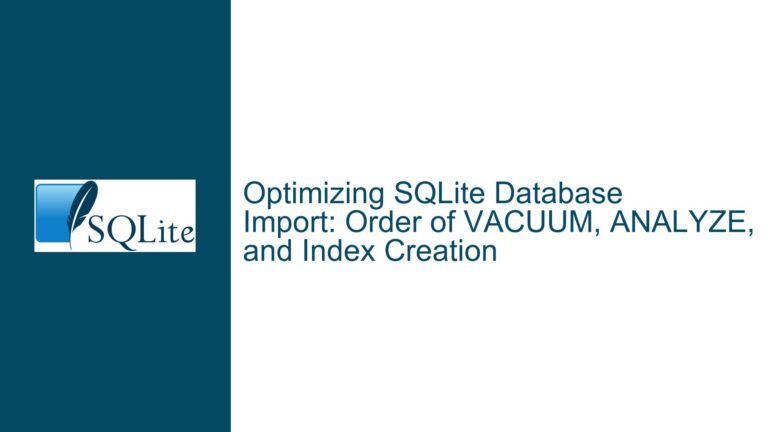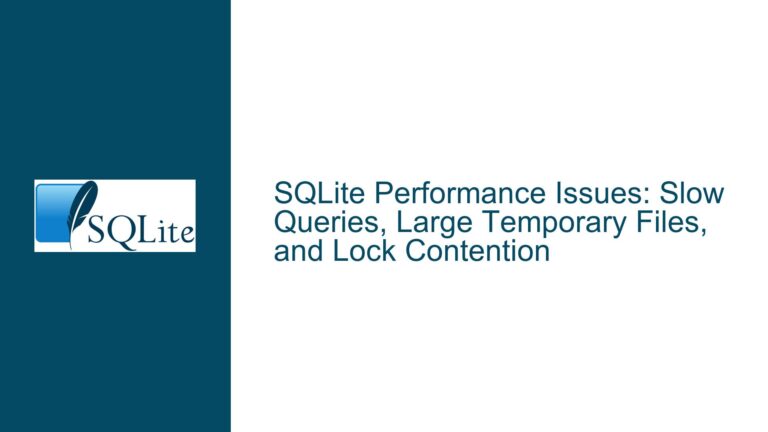Improving SQLite Concurrency: Understanding Locking and Performance Optimization
SQLite’s Database-Level Locking Mechanism and Its Impact on Concurrency
SQLite employs a database-level locking mechanism, which means that when a transaction writes to any part of the database file, all other transactions are prevented from reading or writing to any part of the same file. This design choice is rooted in SQLite’s architecture, which prioritizes simplicity, reliability, and portability over high concurrency. The locking mechanism ensures data integrity by preventing conflicting operations from occurring simultaneously. However, this approach can lead to performance bottlenecks in scenarios where multiple transactions need to access different tables within the same database concurrently.
The database-level locking mechanism operates through a series of locks that escalate in exclusivity. SQLite uses five types of locks: UNLOCKED, SHARED, RESERVED, PENDING, and EXCLUSIVE. When a transaction begins, it acquires a SHARED lock, allowing multiple read operations to occur simultaneously. However, when a write operation is initiated, the lock escalates to RESERVED, then PENDING, and finally EXCLUSIVE, which blocks all other transactions until the write operation is complete. This escalation ensures that no two transactions can write to the database simultaneously, but it also means that even read operations are blocked during a write.
The impact of this locking mechanism becomes particularly evident in applications with high concurrency requirements. For example, consider a scenario where Transaction A is writing to Table_1 while Transaction B attempts to read from Table_2. Despite operating on different tables, Transaction B will be blocked until Transaction A completes its write operation. This behavior can lead to significant performance degradation in multi-user environments or applications with frequent write operations.
The Limitations of Table-Level Locking and Disk I/O Contention
One common misconception is that SQLite could improve concurrency by implementing table-level locking, where locks are applied only to the specific tables being accessed. However, SQLite does not support table-level locking, and there are several reasons for this design choice. First, table-level locking would introduce significant complexity into SQLite’s codebase, potentially compromising its reliability and portability. Second, even if table-level locking were implemented, the underlying disk I/O operations would still create contention, as most storage devices cannot perform multiple read/write operations simultaneously.
The suggestion to split tables into separate database files to improve concurrency is a logical workaround, but it has limitations. While this approach would allow transactions to operate on different tables without being blocked by database-level locks, the performance gains are often minimal. This is because the disk I/O operations for multiple database files are still subject to the same physical constraints. If the databases reside on the same disk, the read/write operations will still be serialized at the hardware level, negating much of the potential benefit.
Moreover, managing multiple database files introduces additional complexity at the application level. Applications must handle connections to multiple databases, ensure data consistency across files, and manage transactions that span multiple databases. These challenges can offset the potential performance gains, especially in scenarios where the disk I/O is the primary bottleneck.
Leveraging WAL Mode and Optimizing Transaction Design for Better Performance
To address the limitations of SQLite’s locking mechanism and improve concurrency, developers can leverage Write-Ahead Logging (WAL) mode. WAL mode is a significant enhancement introduced in SQLite that allows readers and writers to operate concurrently without blocking each other. In WAL mode, write operations are appended to a separate log file (the WAL file) rather than being written directly to the main database file. This allows readers to continue accessing the main database file without being blocked by write operations.
WAL mode also improves performance by reducing the frequency of disk I/O operations. Instead of writing changes directly to the database file, which can be expensive, changes are first written to the WAL file, which is faster due to its append-only nature. The changes are later checkpointed into the main database file in a more efficient manner. This approach not only improves concurrency but also enhances overall performance, especially in scenarios with frequent write operations.
To enable WAL mode, execute the following SQL command:
PRAGMA journal_mode=WAL;
In addition to using WAL mode, optimizing transaction design can further improve performance. One effective strategy is to minimize the duration of write transactions. Long-running write transactions increase the likelihood of contention, as they hold the EXCLUSIVE lock for an extended period. By breaking down large write operations into smaller, more manageable transactions, developers can reduce the time that the database is locked, allowing other transactions to proceed more quickly.
Another optimization technique is to use deferred transactions when possible. Deferred transactions do not acquire a RESERVED lock until the first write operation, allowing multiple read operations to proceed concurrently. This can be particularly useful in scenarios where a transaction primarily performs read operations but may occasionally perform writes.
Finally, developers should carefully evaluate the need for true concurrency in their applications. In many cases, the perceived need for simultaneous access to different tables may be based on assumptions rather than actual requirements. By analyzing the specific use cases and transaction patterns, developers can often design their applications to operate efficiently within SQLite’s concurrency model without resorting to complex workarounds.
In conclusion, while SQLite’s database-level locking mechanism can pose challenges for high-concurrency applications, understanding its behavior and leveraging features like WAL mode can significantly improve performance. By optimizing transaction design and carefully managing disk I/O, developers can achieve a balance between data integrity and concurrency, ensuring that their applications run efficiently even under demanding conditions.
